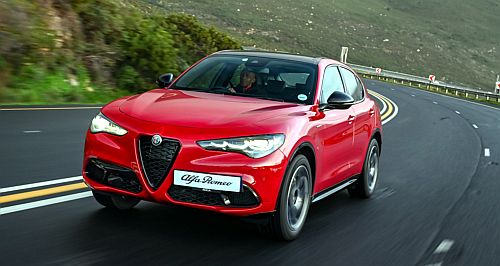Market Insight: Stellantis sales slide
BY MATT BROGAN | 5th Aug 2024

THERE has been a lot of discussion recently surrounding the performance of Stellantis group brands both here and abroad.
Recent reports suggest the 15-brand-strong parent is struggling under the weight of a make-and-model mixture that does not necessarily meet the demands of customers in the various markets in which they are sold, while others – including group CEO Carlos Tavares – hint at deeper issues around pricing and quality that are harder to quantify.
Mr Tavares recently said the situation has led the automotive giant to consider parting ways with loss-making marques. DS and Lancia are said to be earmarked for the chopping block, once-mighty Chrysler has just one people-mover in its line-up and Maserati was given an official stay of execution after speculation that it was looking down the barrel of a sale to the highest bidder.
While not all Stellantis Group brands are struggling, it seems some are performing worse now than they did before the merger that joined former Fiat Chrysler Automobiles (FCA) brands with Peugeot Societe Anonyme (PSA) Group took place in January of 2021.
But how are Stellantis brands faring Down Under, where distribution of the various marques is spread thinly across a factory-owned subsidiary and two independent importers.
As a snapshot in time, we look at the performance of seven Stellantis brands as of June 30 every second year since 2014 noting that most have maintained an even keel under new management.
So, is the issue with Stellantis? Or the brands themselves? It is a genuinely difficult question to answer.
Brands that experienced quality and reliability issues in the Australian market have improved beyond expectation, now matched with robust warranties and aftersales provisions that match (and in some cases better) the status quo – and nary a recall in sight.
Further, the majority have kept pace with changes in customer expectations, offering up-to-date technology, A-grade safety equipment, and environmentally conscious drivelines.
Perhaps the issue is down to grudge-holding buyers and not the cars themselves. Or perhaps it comes down to price.
Recent and significant cuts to Stellantis group makes, particularly those wearing the Jeep logo, show the models were perhaps overpriced to begin with, at least when viewed against their closest competitors.
As is well known, the slash-and-burn approach to pricing can serve to devalue a particular model rather than driving up sales, while antagonising customers who paid top whack only to have their vehicle’s value torpedoed with the mark of a pen.
Whatever the case may be, it is evident that, for the most part, Stellantis group brands have fallen out of favour.
Ignoring Ram – a relatively new brand to this market which to all intents and purposes stands apart from Stellantis in the local market – and Maserati – which by virtue of its exclusivity has adhered closely to its half-yearly average for a decade or more – and we note that all other marques have nosedived from their 2014 position.
As of June 30 this year, Peugeot sold 45.9 per cent of the volume it did a decade ago, Alfa Romeo 21.5 per cent, Citroen 10.4 per cent, and Fiat (including Abarth) just 8.4 per cent of the numbers it did in 2014.
But by far the biggest loser is Jeep. As noted in our January 22 Market Insight, the American SUV and off-road brand has declined steeply since 2014, now selling just 7.7 per cent of the volume it once achieved.
The statistics are alarming, and suggest some brands in the group really could be in trouble Down Under. After all, brands with higher sales numbers than these have pulled up stumps before.